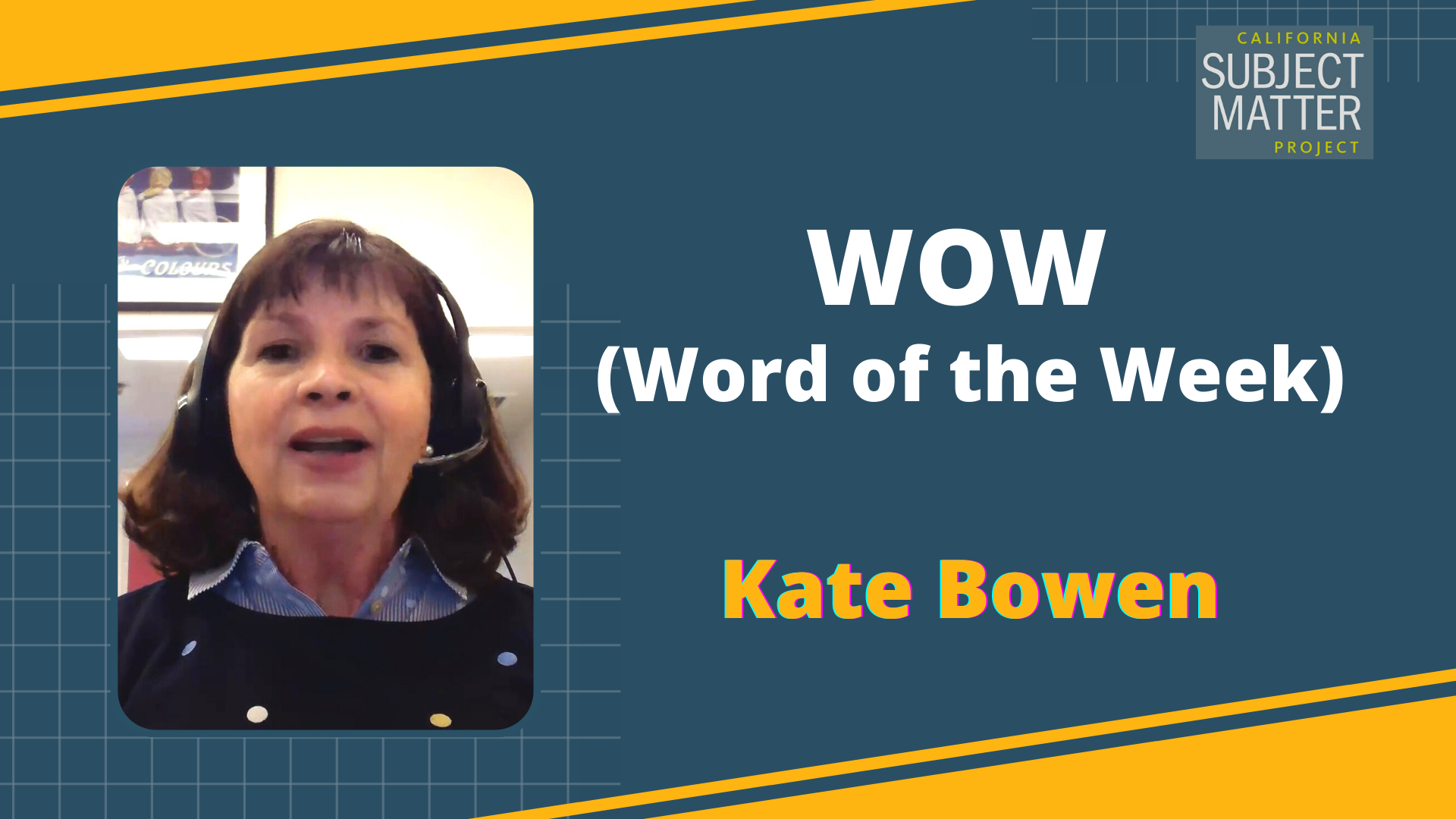Watch the Video
Presenter
Christine Ybarra is a teacher leader with the California Reading and Literature Project.
Transcript
Hello, my name is Christine Ybarra and I am a teacher leader with the California Reading and Literature Project. Today I’d like to teach you about establishing and maintaining a positive classroom environment as part of classroom management in secondary classrooms.
Communicating clear limits and expectations is key to classroom management. Harry Wong, a leader in classroom management professional development for teachers, tells us that:
“The number one problem in the classroom is not discipline, it’s the lack of procedures and routines.”
When you first arrive in the classroom, it is important to preview and review the plan left by the teacher.
It is also important to stick with the plan that the teacher has left with you, but you will want to prepare in advance; locate materials and supplies around the classroom; set up any materials that you might need, like the teacher’s edition or dry erase markers; and look around the classroom for examples of rules and procedures or current learning topics. You can learn a lot by looking around the classroom at different bulletin boards.
You should also prepare a brief introduction. You’ll want to tell students who you are, what the plan is, as well as any other information that they might need to know for the day.
When your students arrive, this is your opportunity to establish leadership in the classroom. Stand somewhere visible, such as the doorway and greet students as they walk into class. Once students have entered the classroom, introduce yourself and be enthusiastic. If you are enthusiastic, kids will have confidence in learning from you.
After your introduction, it’s important to set expectations right away. Don’t overwhelm students with too many rules or choices. Be clear, consistent, kind, and confident in all of your interactions about expectations with students.
You will want to be sure to think about communicating the limits. Things such as noise level, completing work, asking for help or asking to use the restroom or get water are all things that we can consider for procedures. What will the procedure or expectation be for packing up? Transitioning to the next class? What work are students expected to complete before the class period is over? And what should students do if they finish their work? What directions can you give them if they do not finish their work?
It’s important to give students examples of what all of these procedures will look and sound like. For example, when you’re talking to students about noise level, you may want to tell them something along the lines of: “For this collaborative activity, a conversational volume with the person next to you is fine, but yelling across the classroom to another group is not acceptable.”
Students will be used to a certain set of expectations from their teacher, so if at any point part of the teacher’s plan is unclear, it’s important to involve students in this discovery process and ask them questions such as: “If your teacher were here, what would the expectation be?” This may help students recall the expectations that the teacher has on a daily basis. In addition, it will also help you clarify.
Another way that you can establish and maintain a positive classroom environment is to be active. Harry Wong also tells us that, “the problems we have in our classrooms are proportional to distance.”
So it’s essential that you circulate around the classroom as students are working, and you should teach and interact with students from different points in the room. Check in with them as you circulate and answer questions and monitor activities.
When maintaining a positive classroom environment, we must prepare in case things do not go exactly as we expected. In these instances, it is important to remember that you should stay calm and be mindful of your tone when interacting with students.
There may be times when students follow your instructions, but it does not go as planned. In these cases, be honest. Say something like: “That did not go quite as expected. Let’s try it again.” That can help students better understand expectations. Circulating and proximity are important when we want to monitor student behavior and work.
When a student does not meet these expectations, it’s important that you offer reminders and allow students the opportunity to adjust to you, as a new instructor, or the new situation of having a substitute teacher.
Reminders can also be useful for students. Asking them to share their understanding of expectations might help in reminding them of what the expectations are. You might ask: “What is the expectation for independent work today?” Use these responses equitably and keep the rules and expectations the same for all students.
When a student is not meeting expectations, quiet corrections may also be necessary. Have a quiet conversation with the student and remind them of what the expectations are. You might also need to offer choice in this situation. You might say to a student: “You can complete today’s assignment or reread the assigned chapter, but you will need to put your device away during group work time.” it is a good idea to remind students of the expectations each time there is a transition to a new activity or a new group.
In conclusion, being engaged in managing behavior requires clarity and consistency. Being clear with students about expectations and approaching misbehaviors positively can positively impact student learning and make a difference in what you are able to accomplish within a class period or a day.
Accompanying Materials & Resources
- Quick Guide: Classroom Management in Secondary Grades (PDF – 1 Page)
- Classroom Management – Project Status Report (PDF)



